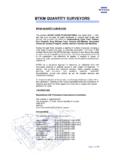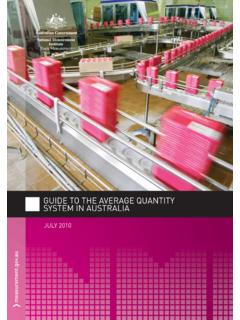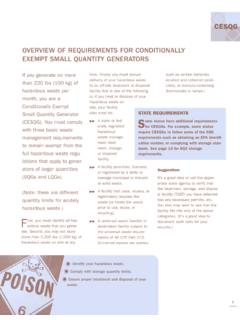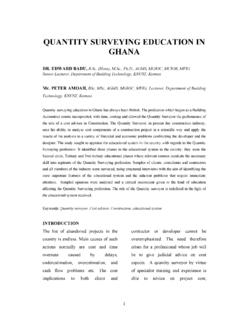Transcription of Conditionally Exempt Small Quantity Generator Handbook …
1 Conditionally Exempt Small Quantity Generator Handbook For Hazardous Waste Handlers March 2009. State of connecticut Department of Environmental Protection Bureau of Materials Management and Compliance Assurance Waste Engineering and Enforcement Division 79 Elm Street, Hartford, connecticut 06106. Tel (860) 424-3023 Toll-Free 1-888-424-4193 Contact Information Emergency Contact Numbers CT DEP Emergency Spill Reporting (866) DEP-SPIL (toll free). or (860) 424-3338. National Response Center (800) 424-8802. connecticut Department of Environmental Protection Numbers Hazardous Waste Compliance Assistance (888) 424-4193. Solid Waste and Recycling Program (860) 424-3366/3365. Stormwater and Wastewater Discharge Programs (860) 424-3018. Underground Storage Tank Program (860) 424-3374.
2 Office of Pollution Prevention (860) 424-3297. Bureau of Air Management (860) 424-3436. Remediation Division (860) 424-3705. This Handbook is intended as an educational tool for Conditionally Exempt Small Quantity generators . It does not constitute a complete reference to state, federal or local laws. In the event of inconsistency between this document and the regulatory language, the language in the hazardous waste management regulations controls. It is your responsibility to comply with all applicable laws. Relying on the information in this Handbook will not protect you legally and may not be relied upon to create a right or benefit substantive or procedural, enforceable at law or in equity by any person. Final determination of the proper handling and disposal of waste is the sole responsibility of the Generator .
3 The Department of Environmental Protection is an equal opportunity/affirmative action employer, offering its services without regard to race, color, religion, national origin, age, sex, or disability. In conformance with the Americans with Disabilities Act, the DEP makes every effort to provide equally effective services for persons with disabilities. Individuals with disabilities needing auxiliary aids or services should call (860) 424-3000. Preface Does My Business Generate Hazardous Waste? Hazardous wastes are a group of wastes that are subject to special handling requirements because their mismanagement may lead to serious hazards to human health and the environment. These wastes are regulated under the Resource Conservation and Recovery Act ( RCRA ).
4 When we hear the term hazardous waste, many of us think of industrial chemicals, however, that term includes many common items, as well. For example, when disposed of, clogged aerosol cans, hand sanitizing gels, and oil-based paints are hazardous wastes (all are ignitable). Most businesses generate Small quantities of hazardous waste. Businesses that generate less than 220 pounds (100 kilograms or about 26 gallons) of hazardous waste per month and accumulate no more than 2,200 pounds (1,000 kilograms or about 260 gallons) of hazardous waste on-site at any one time and that generate less than pounds (1. kilogram) per month of acute hazardous waste are Conditionally Exempt Small Quantity generators (CESQGs). Below are examples of some Businesses that may generate hazardous wastes: Chemical Laboratories Hardware Stores Printers Laundries and Dry Cleaners Metal Working Shops Construction Contractors Furniture and Vehicle Maintenance and Lawn and Wood Refinishers Dismantling Shops Garden Care Centers As a CESQG, you will be required to comply with the following: Perform a hazardous waste determination on all the wastes you generate, and keep records of them for at least 3 years from the date of disposal.
5 If you hire a waste hauler to take away your hazardous waste, be sure that the hauler has a valid EPA Identification number and permit to haul hazardous waste in connecticut . Ensure that your hazardous waste is disposed of at a permitted commercial hazardous waste treatment or disposal facility, or a household hazardous waste facility (or one-day collection event) permitted to take CESQG waste. Utilize universal waste program for batteries, fluorescent lamps, mercury- containing equipment, electronics, and pesticides. Comply with used oil requirements for any used oil that you generate. Comply with connecticut 's recycling laws CESQG Handbook i|Page Preface Contents STEP 1: EVALUATE YOUR 1. What is a Hazardous Waste? .. 1. Characteristically Hazardous Wastes.
6 1. Listed Hazardous Wastes .. 2. How do I Perform a Hazardous Waste Determination? .. 3. Laboratory Testing .. 3. Knowledge of Process .. 3. Is Recordkeeping Required? .. 3. Non-RCRA-Hazardous connecticut -Regulated Wastes .. 4. EPA Hazardous Waste Codes for Waste Streams Commonly Generated by Small Businesses .. 5. STEP 2: DETERMINE YOUR HAZARDOUS WASTE Generator STATUS .. 6. Procedure for Determining Your Generator Status .. 6. Episodic Generator .. 8. What do I do if I Exceed my Allowable Generation Rates in a Calendar Month? .. 8. STEP 3: REGULATORY REQUIREMENTS .. 9. RECORDKEEPING .. 10. SAFE TRANSPORT AND DISPOSAL OF HAZARDOUS WASTE .. 11. How do I Safely Transport my Hazardous Wastes? .. 11. Suggestions for Preparing Hazardous Wastes for 11. How do l Safely and Properly Dispose of my Hazardous Waste?
7 12. Can I bring my Hazardous Waste to a HHW Collection Facility or Event? .. 13. Manifests .. 14. MANAGEMENT OF BATTERIES, LAMPS, MERCURY-CONTAINING EQUIPMENT, ELECTRONICS, AND. PESTICIDES .. 16. USED 19. Do I Have to Test my Used Oil?.. 19. How Should I Manage the Used Oil I Generate? .. 21. RECYCLING AND WASTE MINIMIZATION .. 22. Required Recycling .. 22. How Does Waste Minimization Help Me? .. 23. SUGGESTED BEST MANAGEMENT PRACTICES FOR CESQGS .. 25. Managing Your Hazardous Waste in Container(s) .. 25. Managing Your Hazardous Waste in Tank(s) .. 26. Conducting Inspections .. 27. Planning for Emergencies .. 28. Responding to Emergencies .. 30. Personnel Training .. 31. APPENDIX 1 HAZARDOUS WASTE 32. Hazardous Waste Determination Summary Sheet.
8 32. Toxic Characteristic Waste Codes .. 34. F-Listed Wastes .. 35. APPENDIX 2 HAZARDOUS WASTE INSPECTIONS .. 36. Inspection Log for Hazardous Waste Storage Areas .. 37. APPENDIX 3 EMERGENCY POSTING .. 38. APPENDIX 4 Generator CATEGORY COMPARISON .. 39. APPENDIX 5 TRAINING RECORD 40. APPENDIX 6 EXAMPLE OF A COMPLETED MANIFEST .. 41. GLOSSARY .. 42. ADDITIONAL RESOURCES .. 43. STEP 1: EVALUATE YOUR WASTE. Businesses that generate a waste are required to determine whether or not that waste is hazardous. This can be challenging, as the RCRA regulations establish a complex definition of the term hazardous waste. Some general knowledge about the basic characteristics of the wastes may be helpful in making this determination, but some laboratory testing is usually required.
9 What is a Hazardous Waste? There are two ways a waste may be considered a hazardous waste: (1) if it is Characteristically Hazardous, or (2) if it is Listed Hazardous waste. A list of hazardous wastes frequently generated by Small businesses appears on page 5. Characteristically Hazardous Wastes are wastes that exhibit any one of the four characteristics listed below, and begins their 4-digit EPA waste code with D . An abbreviated definition is given for each one here. They are fully defined in the federal hazardous waste regulations. CHARACTERISTIC DEFINITION TESTING EXAMPLES. Liquid waste with a flash Laboratory certified used solvents points lower than 140 F by the CT Dept. of waste gasoline Public Health spent IGNITABILITY Ignitable solids adhesives EPA Waste Code Ignitable compressed gases non-empty D001 container of Materials that are alcohol designated by the DOT based hand as oxidizers.
10 Sanitizer gel Liquid wastes with a pH less The most accurate waste muriatic acid than or equal to way to determine pH caustic paint CORROSIVITY is with a laboratory strippers EPA Waste Code Liquid wastes with a pH test. non-empty D002 greater than or equal to containers of drain cleaner Materials that are: normally Laboratory certified cyanide compounds unstable; react violently, by the CT Dept. of blasting caps Public Health dynamite explode, or emit toxic fumes REACTIVITY when mixed with water other explosives EPA Waste Code non-empty D003 Capable of exploding at aerosol room temperature and cans pressure or when heated under confinement. Materials containing greater Determined in a lead-based paint chips TOXICITY than the regulated certified lab by a test spent methyl ethyl called the Toxicity ketone solvent EPA Waste Code concentration of any of 40.

















